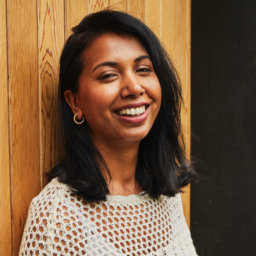The 4 types of Design Roles
When looking for design job roles it is important to figure out what type of environment you want to work in. We will take a look at four common types of design environment that we at team YES have all experienced ourselves. Please note that as a creative you may change environments frequently until you find the one that
works best for you. Bare in mind that nothing is ever permanent and in time your lifestyle and needs
will change!
1: Agency or Studio Designer
An agency is a larger company and studio is slightly smaller but both provide client services such as design, production, or anything else to promote a product or cause. As a designer you will need to create graphics for brands following their briefs. The advantages of a large agency is that you may have the chance to work with high profile brands with big budget. The disadvantage is that you will be working with a larger team and may not easily get recognition so it is likely that you need to work your way up. Smaller studios tend to work with local business but can also have high profile clients too, you may have more creative input and your effort will be more likely get noticed which is always very rewarding!
Agency/ Studio roles are great for creatives that get bored easily, so if you love working across different industries and want to be part of high profile campaigns then this may work for you. There will be long hours involved and at times may feel design pressure as you juggle with multiple projects at one given time!
Please Note:
Some agencies may hire freelancers or collaborate with other agencies for a particular projects!
2 : In-House Designer
Companies nowadays are reluctant to spend too much of their budget outsourcing to larger agencies. It is now becoming common for companies to have their own team of creatives who are involved in designing graphics for new campaigns. As a designer your graphics will need to be consistent and follow the company brand guidelines. Retailers like Nike, Marks and Spencers, Universities and Tech companies such as Google, Facebook all have their own in-house design team. It is advisable to work for a company who you really admire as it will always feel exciting. In-house roles can be highly creative depending on the company however following strict brand guidelines doesn’t always allow you to have creative freedom.
In-house roles are great for designers who love
a challenge but do not want to work across different sectors and want to be part of a smaller team. Some in-house role can be very demanding especially for big brands however your creativity will get noticed. On a side note some in-house designers are heavily involved in creating marketing materials such as brochures, business card and reports so it can get less challenging
over time.
3: Freelance Designer
A freelance designer is self-employed, they offer their design skills and services to clients, agencies and companies. A lot of creatives dream of being their own boss and having the flexibility to work wherever or whenever they want however in reality freelancing is not as easy as it sounds.
As a freelancer you are solely in charge of your own
business, you need to find your own clients and be self motivated, the business aspect of freelancing is time-consuming and can leave you with less time for creativity. Established and successful freelancers get great pleasure in choosing work that best suits their style however freelancers also need to follow strict brand guideline and may need to work occasionally on client site!
Please note:
You need to be a fast-faced as agencies tend to take on freelancers during their busy period. Some freelancers may also have a full-time design job but take on additional freelance work on an ad-hoc basis!
4: Remote Designer or Nomad Designer
Remote working is a hybrid between working as a freelancer and as an in-house designer! Advanced technology now gives employers the flexibility to hire designers remotely, you can have meetings, catch-ups and share ideas online without ever having to meet. If you are looking to hire Freelance Designers then we highly recommend checking out DesignerHire.
Remote designers work independently but are still part of a collective team. New start-ups or even some established companies prefer to save office rental costs and give creatives the chance to work remotely. This is becoming increasingly popular and we will see a rise of remote friendly companies growing rapidly. As technically brings the world closer, it also allows designers to work for some great brands without the need to ever commute!
Remote working is great for creatives who are self motivated, trustworthy and do not like to be micromanaged or just simply feel more creative when they are alone. They love being part of a collective team but do not need to deal with the stress of finding regular work or in general prefer to avoid office distractions.
Please note:
If you are amazing at your job as a in-house or agency designer, you may be able to convince your boss to let you work remotely. We at Team YES all work remotely but have a communal office space for when we need to use it.
I hope you enjoyed this article and found it use-full, if you want to learn more on building your design career, check out our post on getting started as a graphic designer ! We wish you all the best in your creative journey.





